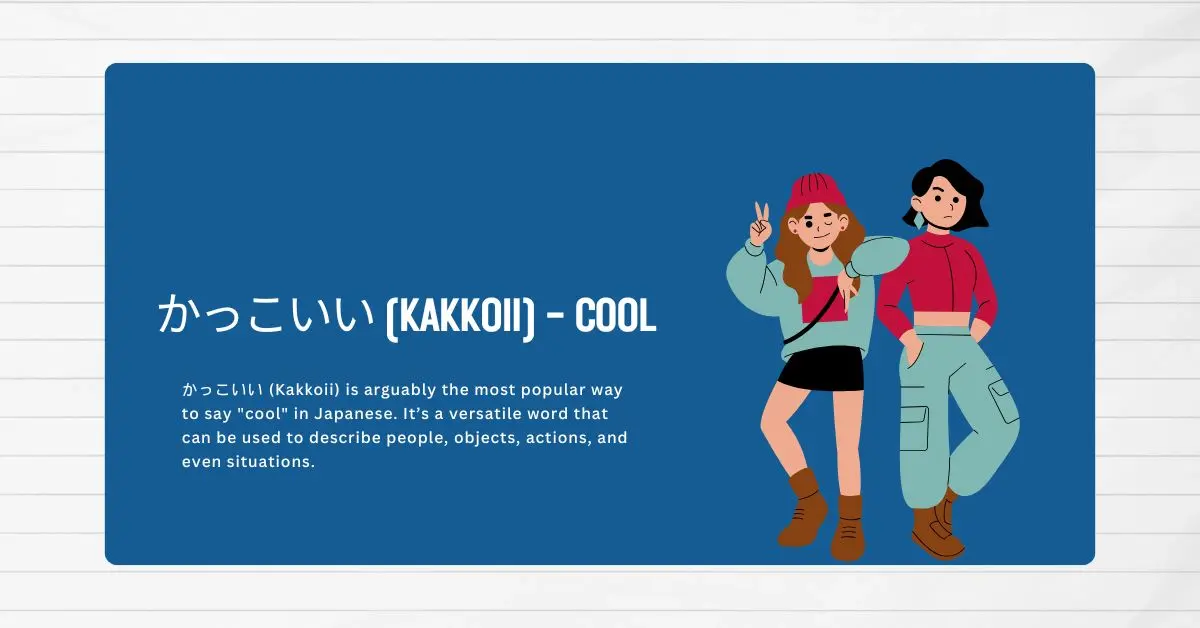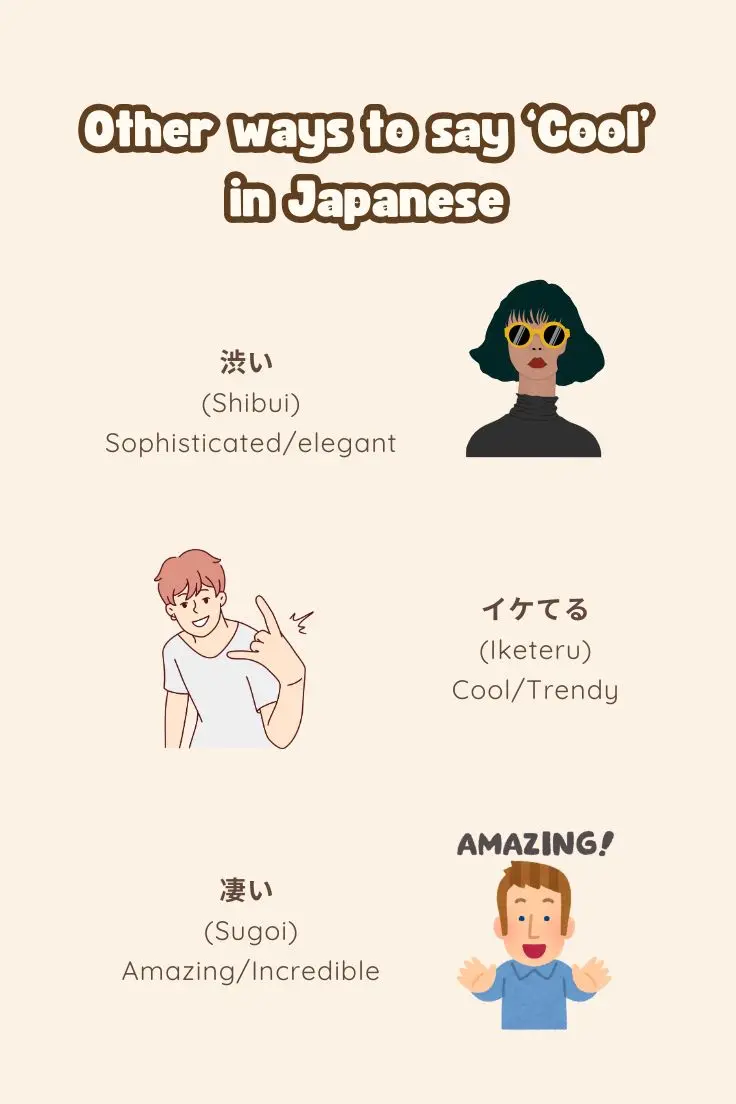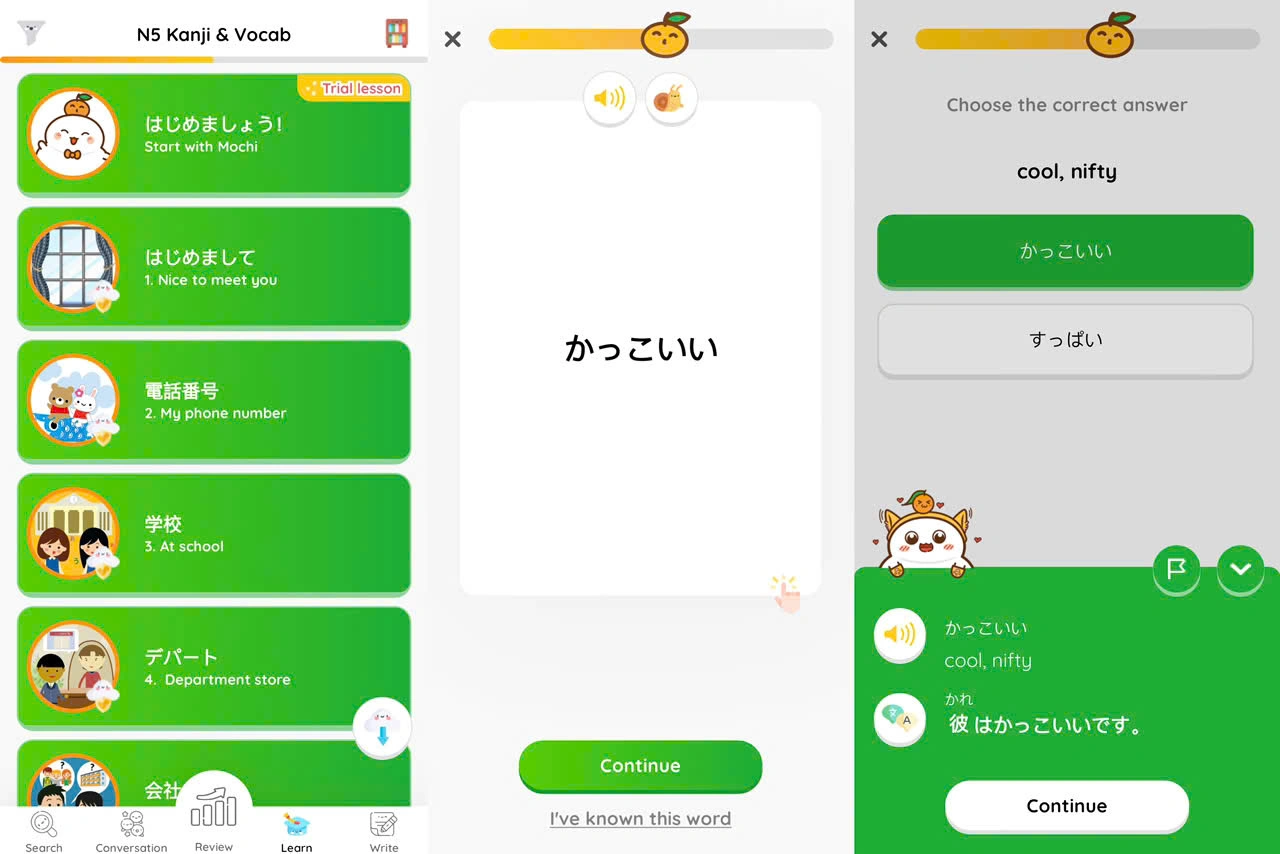- How to Say “Cool” in Japanese
- Different Contexts for Using “Cool” in Japanese
- Other Japanese Words Related to “Cool”
- Cultural Nuances of “Cool” in Japanese
- Learning to Use “Cool” in Japanese Naturally
- Conclusion
The word “cool” has become a universal expression for something impressive, trendy, or attractive. But how do you say “cool” in Japanese, and what cultural nuances surround its usage? From casual slang to formal compliments, Japanese offers a variety of ways to convey this concept depending on the situation.
In this comprehensive guide, we’ll explore different translations of “cool” in Japanese, their contexts, and how to use them effectively. By the end, you’ll not only understand how to say “cool” in Japanese but also gain insights into how this word reflects the values and trends within Japanese culture.
1. How to Say “Cool” in Japanese
The Japanese language offers several ways to express the idea of “cool,” each with its specific nuances and contexts. Here are the most common terms:
1.1 かっこいい (Kakkoii)
かっこいい (Kakkoii) is arguably the most popular way to say “cool” in Japanese. It’s a versatile word that can be used to describe people, objects, actions, and even situations.
Usage Examples:
- 彼は本当にかっこいいです。
Kare wa hontou ni kakkoii desu.
(He’s really cool.) - この車はかっこいいね。
Kono kuruma wa kakkoii ne.
(This car is cool, isn’t it?)
Kakkoii is commonly used to describe someone who is stylish, attractive, or impressive. It can also refer to something that appears aesthetically pleasing or conveys a sense of awe.
1.2 クール (Kūru)
クール (Kūru) is a direct loanword from English and is used in a similar way to its English counterpart. It often conveys a sense of calm, composed coolness, or emotional detachment.
Usage Examples:
- 彼はいつもクールだ。
Kare wa itsumo kūru da.
(He’s always cool and collected.) - このデザインはとてもクールですね。
Kono dezain wa totemo kūru desu ne.
(This design is really cool, isn’t it?)
Kūru is frequently used in advertising, fashion, and pop culture to describe something trendy or cutting-edge.
2. Different Contexts for Using “Cool” in Japanese
The concept of “cool” can vary depending on the context. Here’s how you can use the above terms in different scenarios:
2.1 Describing People
When referring to someone’s appearance, demeanor, or personality, かっこいい (Kakkoii) is the go-to word.
- 彼はスーツを着ていて本当にかっこいい。
Kare wa suutsu o kiteite hontou ni kakkoii.
(He looks really cool in a suit.)
On the other hand, クール (Kūru) can describe someone who remains calm under pressure or has a sophisticated air about them.
- 彼女はクールな性格で人気があります。
Kanojo wa kūru na seikaku de ninki ga arimasu.
(She’s popular because of her cool personality.)
2.2 Describing Fashion and Style
Fashion in Japan is often praised for its innovation and flair. Both かっこいい and クール can describe stylish outfits or accessories.
- このジャケットはすごくかっこいい。
Kono jaketto wa sugoku kakkoii.
(This jacket is super cool.) - この靴はとてもクールなデザインだね。
Kono kutsu wa totemo kūru na dezain da ne.
(These shoes have a really cool design.)
2.3 Describing Situations or Actions
Certain actions or events can also be described as cool. For instance:
- そのスケートボードの技はかっこいいね。
Sono sukeetoboudo no waza wa kakkoii ne.
(That skateboarding trick is cool, isn’t it?)
For situations that are impressively calm or composed, クール might be more appropriate.
- 彼の対応はとてもクールだった。
Kare no taiou wa totemo kūru datta.
(His response was really cool.)
3. Other ways to say Cool in Japanese
Japanese has a rich vocabulary, and there are additional words that convey different shades of the concept “cool.” Let’s look at a few:
3.1 渋い (Shibui)
渋い (Shibui) is often used to describe a more mature, understated type of cool. It refers to something that is sophisticated, elegant, or stylish in a subtle way.
Usage Examples:
- 彼のファッションは渋いね。
Kare no fasshon wa shibui ne.
(His fashion is cool in a refined way.) - この色は少し渋いけど、素敵だ。
Kono iro wa sukoshi shibui kedo, suteki da.
(This color is a bit subdued, but it’s lovely.)
3.2 イケてる (Iketeru)
イケてる (Iketeru) is a slang term meaning “cool” or “trendy.” It’s commonly used among younger generations.
Usage Examples:
- その髪型、イケてるね!
Sono kamigata, iketeru ne!
(That hairstyle is cool!) - 新しいカフェ、イケてる場所だよ。
Atarashii kafe, iketeru basho da yo.
(The new café is a cool spot.)
3.3 凄い (Sugoi)
While 凄い (Sugoi) primarily means “amazing” or “incredible,” it can also convey a sense of “cool” depending on the context.
Usage Examples:
- そのバンド、凄くかっこいいよ。
Sono bando, sugoku kakkoii yo.
(That band is incredibly cool.)
4. Cultural Nuances of “Cool” in Japanese
In Japan, the concept of “cool” extends beyond mere appearance or style. It reflects deeper cultural values such as harmony, self-control, and aesthetic sensibility.
4.1 The Coolness of Composure
In Japanese culture, maintaining composure in difficult situations is highly respected. Someone who stays calm under pressure might be described as クール or even かっこいい in their demeanor.
4.2 Cool as an Aesthetic
Japanese design, from traditional art to modern fashion, often emphasizes a minimalist and refined aesthetic. This understated elegance is frequently considered 渋い or クール, depending on the context.
4.3 Youth and Trendiness
For younger generations, イケてる and かっこいい are essential slang terms that reflect what’s currently popular, whether it’s a new music genre, fashion trend, or hangout spot.
5. Learning to Use “Cool” in Japanese Naturally
To sound natural when using these terms, practice is key. Here are a few tips:
5.1 Immerse Yourself in Japanese Media
Watch Japanese movies, TV shows, or anime to hear how characters use words like かっこいい and クール in various contexts. This will help you understand their nuances and proper usage.
5.2 Practice Speaking with Native Speakers
Engage in conversations with native speakers, either in person or through language exchange apps. This will give you real-time feedback on how you’re using these expressions.
5.3 Use Flashcards to Learn Contextual Examples
Create flashcards with example sentences for each term. Practice these regularly to reinforce your understanding and improve your recall.
It can be quite helpful to use the MochiKanji app to learn how to speak “cool” in Japanese and to study vocabulary effectively. You will review vocabulary at the best time for improved recall thanks to this tool’s use of spaced repetition. Characters and their meanings are easier to recall using MochiKanji’s features, which include flashcards and interactive quizzes.
6. Conclusion
The concept of “cool” in Japanese is multifaceted, encompassing a range of expressions from the trendy and stylish かっこいい to the calm and composed クール, and even the refined elegance of 渋い. Understanding when and how to use these terms will not only enhance your vocabulary but also give you deeper insights into Japanese culture and its appreciation for style, composure, and aesthetic sensibility.
By practicing these expressions and observing their use in real-life contexts, you’ll be able to confidently describe everything from people to situations as cool in Japanese. Whether you’re complimenting a friend’s outfit or describing a breathtaking design, you’ll have the right words at your disposal to make a lasting impression.








